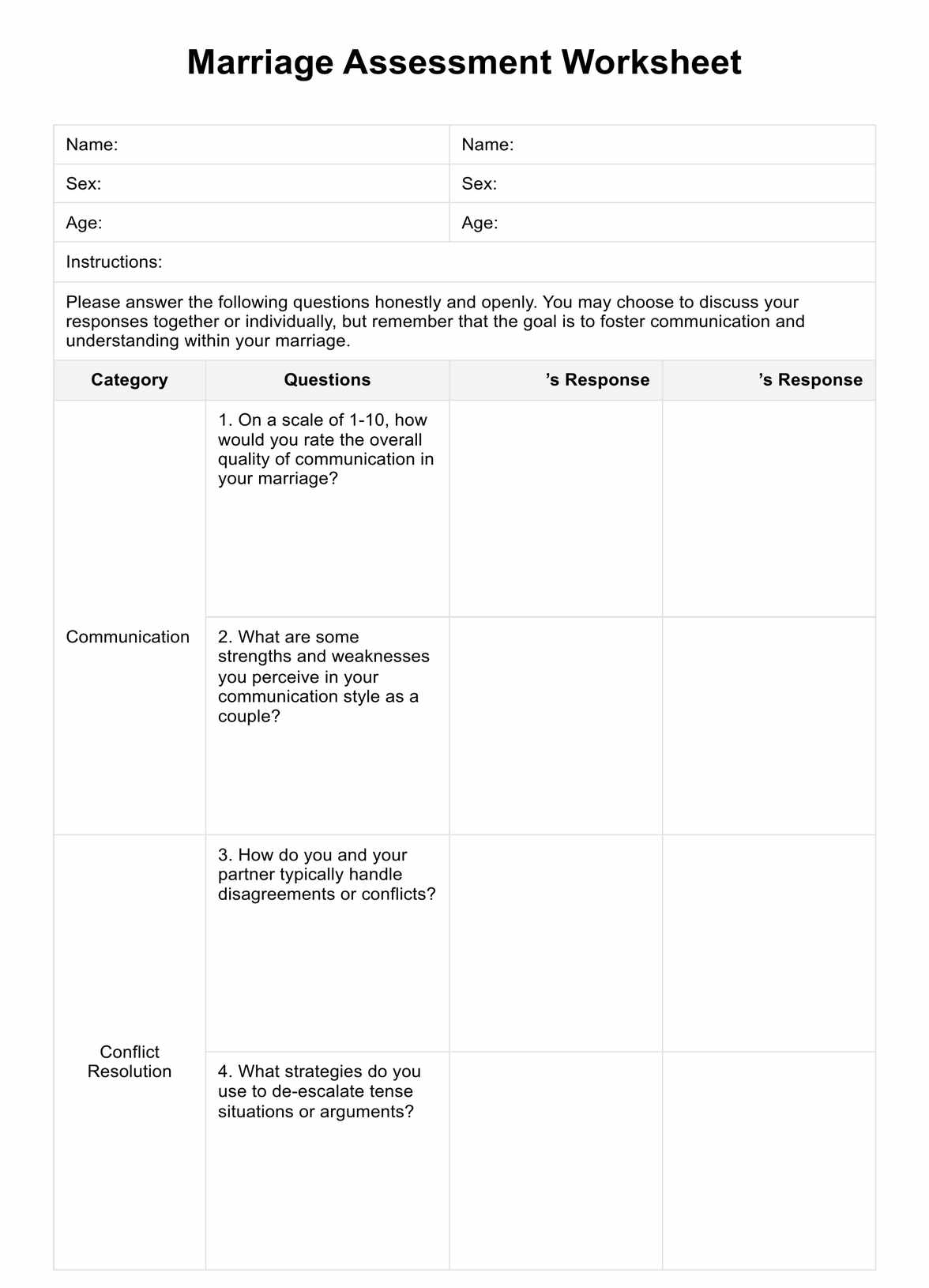Couples can complete the worksheet individually or together to reflect on their relationship and identify areas for improvement.

Marriage Assessment Worksheet
Use our Marriage Assessment Worksheet to help clients grow loving relationships, improve communication with their spouses, and strengthen family bonds.
Use Template
Marriage Assessment Worksheet Template
Commonly asked questions
Counselors can advise couples to be honest in their responses and use the worksheet as a starting point for open and constructive conversations.
Completing the worksheet typically takes about 30-45 minutes, depending on how detailed the responses are.
EHR and practice management software
Get started for free
*No credit card required
Free
$0/usd
Unlimited clients
Telehealth
1GB of storage
Client portal text
Automated billing and online payments











